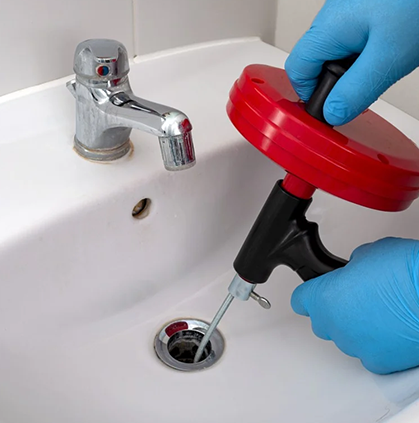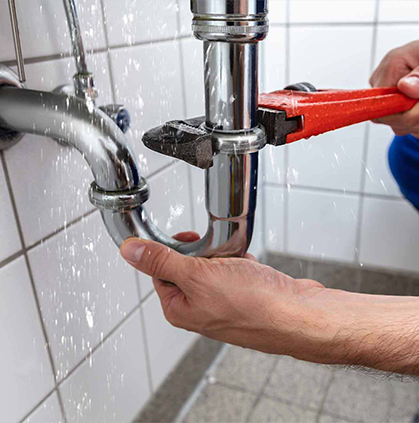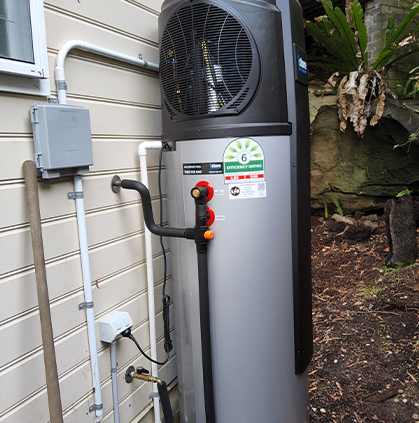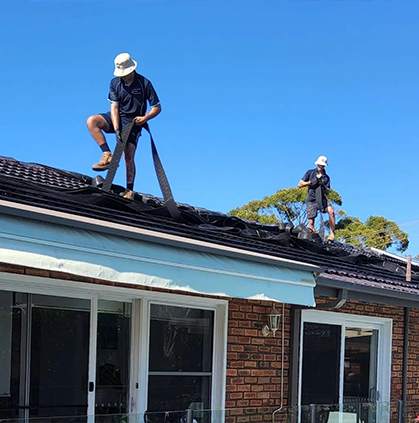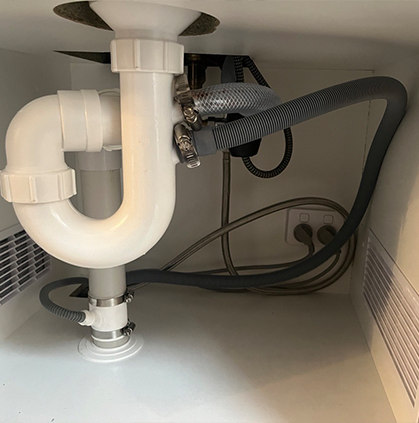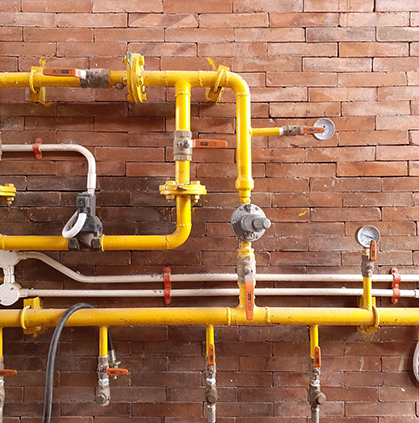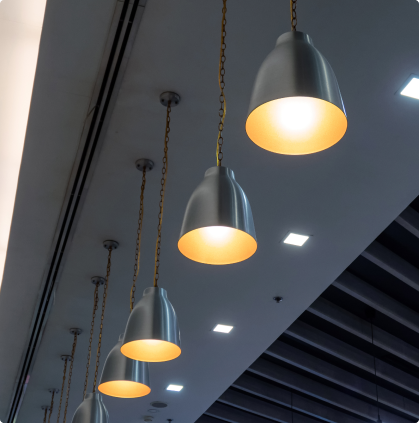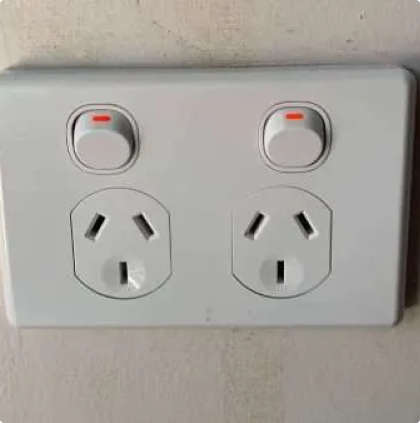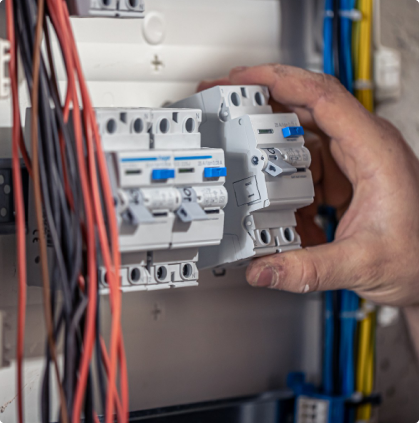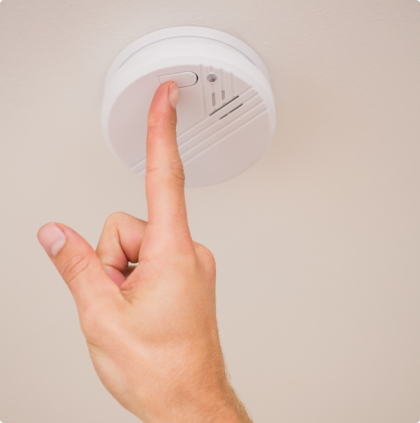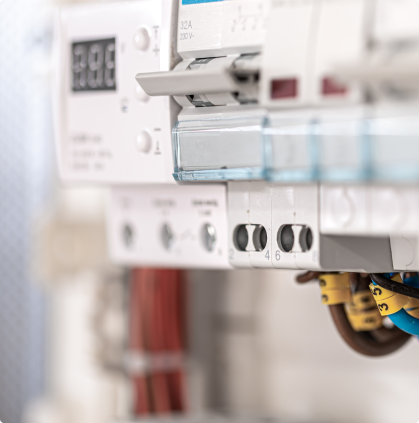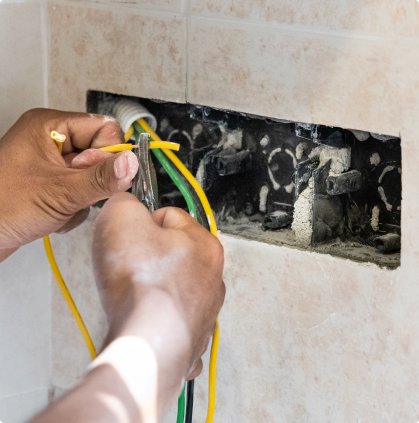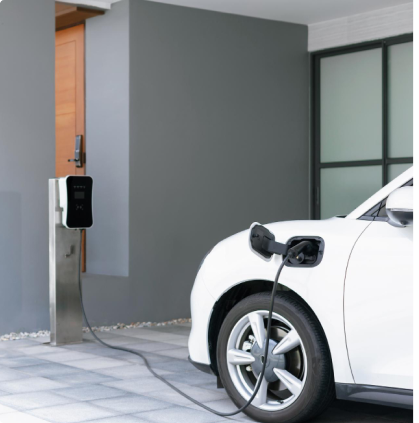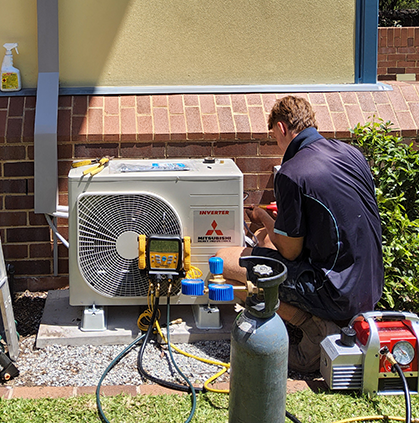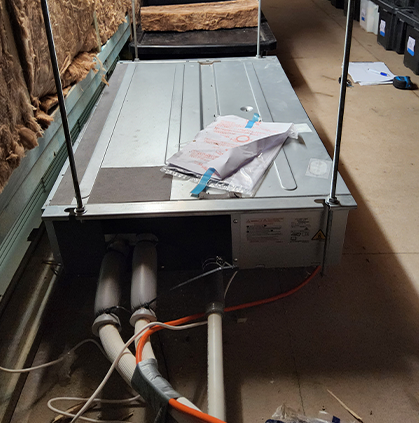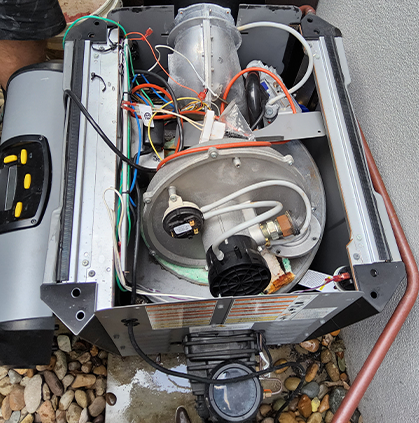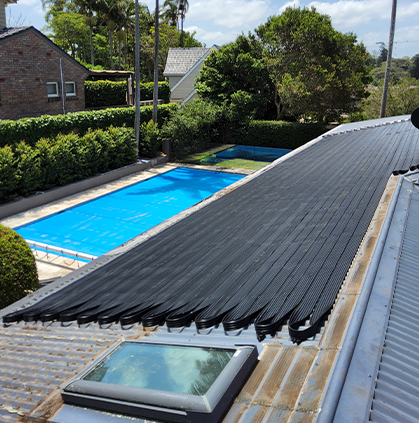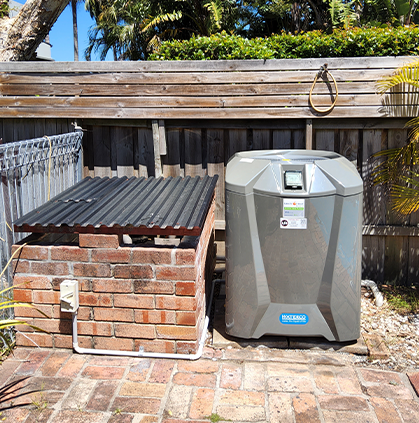With your thermostat always within reach, the real question is how to set the AC temperature for heating effectively.
What feels comfortable on a mild day can leave you cold during a deep freeze. These temperature swings can make your nights uncomfortable.
With insights from trusted air conditioning services, this guide simplifies it all. You’ll learn how to adjust to the changing weather, so you stay comfortable all year round.
What is the Best Temperature to Set in Winter?
In short, the ideal winter temperature for Australian homes is between 18°C and 20°C. This range falls within what’s called the thermoneutral zone, meaning your body doesn’t have to work hard to stay warm.
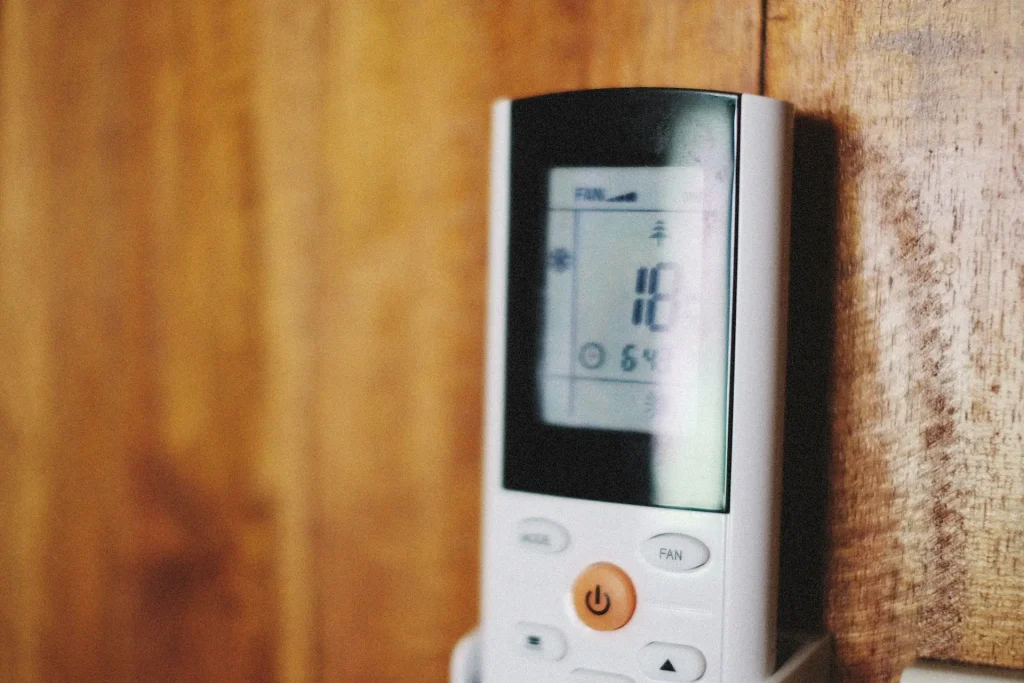
At this temperature, most people feel “cool but comfortable”. That’s because your body stays warm enough to keep its normal temperature, which helps prevent fatigue and discomfort.
Most importantly, this range is also supported by professionals, government guidelines, and health studies.
Ask an HVAC expert about the ideal AC temperature for winter heating, and they’ll recommend sticking to that range. It’s practical, saves energy, and works best if your home is well-insulated and draft-free.
Also, thermal comfort isn’t just about air temperature. Humidity, air movement, and heat also matter. At 18–20°C, keeping humidity between 30% and 70% prevents a cold, damp sensation and skin or throat irritation.
And guess what, research also shows that both cognitive and manual tasks are most effective around 21–22°C. Performance only slightly declines if the temperature is outside this range.
What is the Best Temperature to Set in Summer?
The ideal AC temperature for summer is typically between 24°C and 26°C. This range applies whether you have a split systems installation, ducted AC system, or a window unit.
Although some people might set their thermostats lower, around 19°C, this is usually unnecessary and can waste energy.
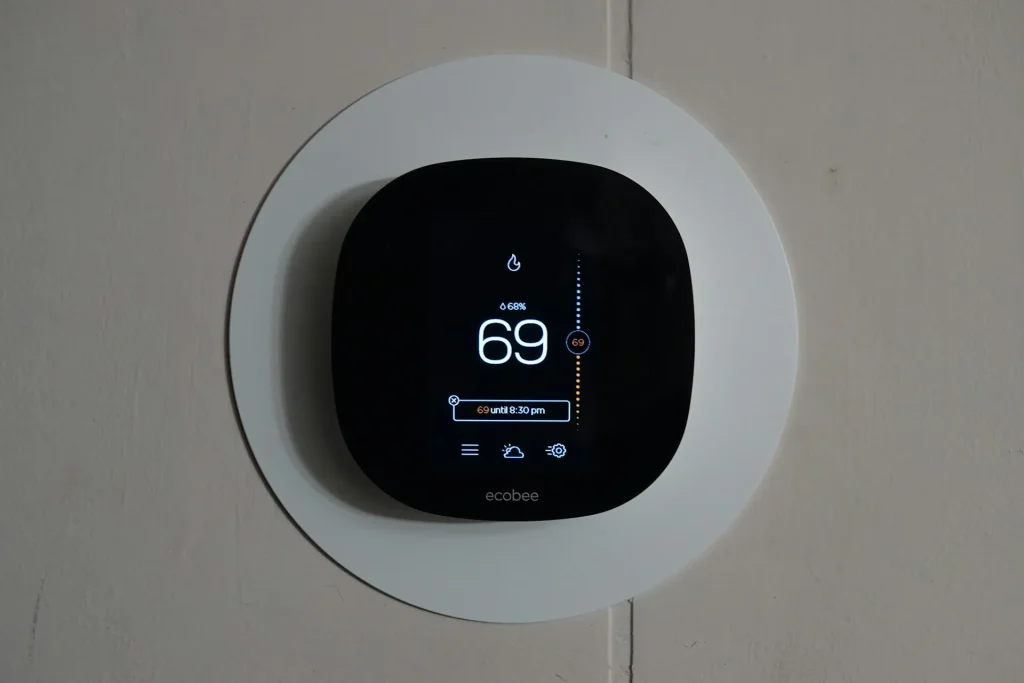
Why is this range the best? On hot summer days, outdoor temperatures can reach 30°C or higher. Keeping your indoor thermostat between 24°C and 26°C creates a comfortable gap between the inside and outside temp.
The “cooling gap” is usually just 4°C to 6°C. Keeping this small gap helps your air conditioner cool your home efficiently without having to work excessively hard.
When your AC system doesn’t need to run at full power all the time, it uses less energy and can save you money on your electricity bill.
Plus, a smaller temperature difference feels better on your body. It makes switching between inside and outside more comfortable, without the sudden shock of big temperature jumps.
What Should You Consider When Setting AC Temperature?
To set your AC temperature for heating, you can activate heat mode by pressing the Mode button, choose Heat, and wait for 3 minutes for it to work. However, before doing that, think about these factors:
1. Personal Comfort
When you choose your air conditioning temperature, your comfort should come first. Since everyone feels hot and cold differently, consider what feels comfortable for you and your family.
For most Australians, setting the air conditioning between 18°C and 20°C in winter is ideal.

However, what keeps one person cosy might not work for someone else. Older relatives often feel colder because their circulation slows down. Young children, with their faster metabolisms, can overheat easily.
2. Room Size
Is your room large? How you use the space is an important factor when setting your AC temperature for winter heating.
In larger rooms, it’s difficult to keep the temperature steady at 18-20°C because heat doesn’t distribute evenly. This can cause the corners to be cooler, leading you to increase the thermostat to 21-22°C.
In smaller rooms, setting the temperature to 18-19°C works well since they heat up quickly. For larger open-plan areas, aim for 19-20°C and ensure good airflow to prevent uneven heating.
3. Occupancy
The more people in a room, the warmer it becomes. This means your air conditioning doesn’t have to work as hard.
Everyone gives off body heat that can increase the room’s temperature by half a degree or more. This allows you to lower the thermostat without feeling uncomfortable.

For example, with four to six people in your living room, setting the AC temperature to 17 or 18°C keeps everyone feeling warm in winter. When there are only two people, setting it to 19 or 20°C is usually enough.
4. Humidity
If it drops below 30–35%, your skin can feel dry, your eyes may itch, and static shocks may occur more often, even if the temperature is around 19°C.
In cold weather, try to keep it on the lower end of the range to prevent excess moisture and mould. Never let it fall below 30%, as this can make you less comfortable and increase the risk of virus spread.
5. Ventilation
When setting your AC for winter, good ventilation is important. It keeps the air fresh and clean. But if there’s too much ventilation, you can lose heat, which makes your heater run more than it needs to.
In Australia’s cold, dry winters, controlled ventilation helps keep your home at a comfortable 18-20°C. But remember not to ventilate too much. This makes your AC system work harder and can lead to dry air.
6. Local Climate
Where you live in Australia matters for how you set your air conditioning temperature, as the weather differs from the north to the south of the country.
In northern areas like Darwin, winter daytime temperatures range between 20-30°C, dropping to 15-20°C at night. Frost is rare, so heating is usually not needed, except perhaps a little on cooler evenings.
However, if you go south to Melbourne, the winters are colder, with temperatures around 6-14°C. You need to heat your home.
7. Home Design
Well-insulated homes stay warmer and cost less to heat. On the other hand, homes that are poorly insulated and have leaks lose heat quickly. This makes you turn up the heat more and spend more money.
In short, your home’s design affects heating efficiency. So, adding insulation to ceilings, walls, and floors can reduce winter heat loss by 25-35%, saving up to 45% on heating bills.
8. AC System Type
Different types of ACs need different settings to heat your home well. Ducted, split, multi-split, and window units all offer reverse cycle heating.
Ducted systems distribute warm air evenly through vents in multiple rooms. For comfort, set the temperature between 18 and 20°C.
Split systems heat faster but cover smaller areas and may not heat as evenly. For larger rooms, increase the temperature by 1-2°C.
Multi-split systems allow you to set different zones at 18-20°C, giving you control over each area. Window units are less efficient in winter. To stay warm, you’ll usually need to set them between 20 and 22°C.
9. Energy Efficiency
Make your air conditioner work smarter, not harder. Always start by setting your reverse cycle air conditioner to 18–20°C in winter. That’s the sweet spot for comfort and savings.
Raising your thermostat from 20°C to 23°C can add roughly 30% to your winter heating bill. This matters in places like Melbourne, where winter daytime temperatures hover between 10 and 15°C.
For a home with a 5kW system, heating at 19°C might cost 1 to $2 an hour. But at 23°C, it could add over 50 cents an hour. Heating every evening could mean an extra 100 or more a month.
10. Your AC Condition
Even if you set your thermostat to the ideal 18–20°C, your home might not reach the temperature you want if your system isn’t working properly.
So, adjusting the AC won’t help. The room may still feel cold or the system might run constantly without effect. These signs suggest ducted air conditioning repair is needed.
Common problems like clogged air filters, dirty coils, or low refrigerant can all prevent your system from working efficiently. This can stop your system from delivering enough warm air to reach your set temperature.
FAQ about AC Temperature
Here are a few questions people often ask about the best AC temperature for heating:
Can I use my AC as a heater in winter?
Yes, you can do this if you have a reverse-cycle air conditioner. And most modern units in Australia are built for this dual purpose.
In summer, it acts like a refrigerator. It removes heat from inside your home and pushes it outside. In winter, it does the opposite. It takes heat from the cold outside air and brings it inside to warm your home.
How Do I Set My AC to Heat Mode?
To switch your AC to heat mode, press the Mode button on your remote. You’ll see different settings like cool, dry, fan, and heat. Heat mode is usually shown with a sun icon.
After selecting heat, it will take 3-5 minutes to start. You may hear a brief pause as the system switches over to heating. The fan will then begin to blow warm air.
What Are the Best AC Settings for Heating?
To stay warm in Australian winters, set your air conditioner thermostat between 18 and 20°C for optimal heating efficiency. While some recommend up to 22°C, 18-20°C strikes the ideal balance for thermal comfort.
If you’re in Perth or anywhere with chilly winter nights, set your AC to 19°C for efficient heating. Avoid 25°C, which uses more energy. For steady warmth, keep the fan on low or auto.
Which Mode Is Best for AC in Winter?
The best setting for your AC during winter is Heat mode. It gives consistent, warm air to keep you comfortable during Australia’s cold weather.
Heat mode keeps your house warm at a steady 18-20°C, without the system turning on and off all the time. It’s like having a heater that adjusts itself, unlike a simple fan heater that blows hot air.
Conclusion
Now you know the best temperature to set in winter or summer, along with weather-responsive tips that prevent uncomfortable swings.
Use this information to adjust your AC settings for better comfort according to the outdoor conditions. For even more efficiency, think about using a programmable thermostat, adding insulation, and improving ventilation.
But, if your AC still doesn’t reach the temperature you set after trying these steps, it’s time to contact an HVAC professional for help.



